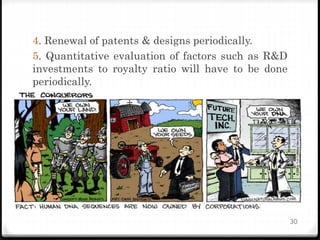This document discusses various types of intellectual property including patents, trademarks, copyrights, industrial designs, and trade secrets. It provides examples and requirements for each type of intellectual property. Key points include:
- Patents protect inventions and provide exclusive rights for a limited time. Requirements include novelty, inventiveness, and industrial application.
- Trademarks protect unique identifiers and brands. They must be distinctive and not descriptive.
- Copyright protects original creative works like books and art. It does not require registration.
- Trade secrets protect confidential business information and formulas by keeping them secret. They provide indefinite protection without registration.

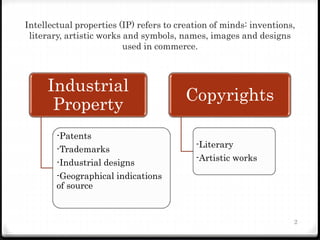

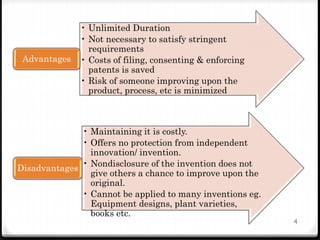
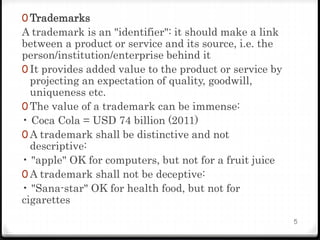

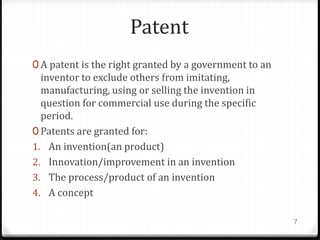


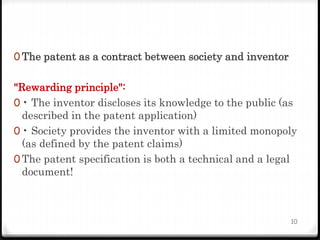


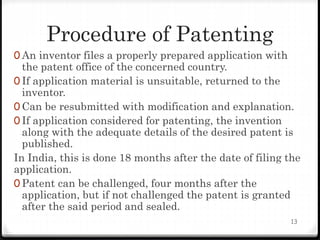

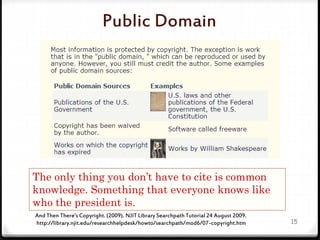






![A] Patenting of Genes & DNA
Sequences
0 An artificially synthesized gene is considered
patentable in all developing countries.
0 But, its controversial in case of genes isolated
from naturally occurring organisms.
0 In USA, patent are allowed on such genes. The
patent statue (35 USC101) requires an invention
to be useful for being patentable.
0 In contrast, courts in UK held that natural genes
are not patentable. The protein encoded by the
gene would be covered under the patent if it were
considered novel.
22](https://image.slidesharecdn.com/ethicalregulatorybasis-161207165134/85/Ethical-amp-regulatory-basis-22-320.jpg)

![B] Gene Patents & Genetic
Resources
0 The developing countries are technology poor, but
gene rich. In contrast, developed countries are
technology rich and gene poor.
0 Aspect of germplasm collections made from the
developing nations relates to the patenting of
useful genes isolated from them by the
individuals/organizations of developed countries.
0 The use for genetic transformation of such gene
by anyone may be prohibited or, at least, would
carry a suitable fee.
0 Thus the country of source origin should not be
charged on gene usage.
24](https://image.slidesharecdn.com/ethicalregulatorybasis-161207165134/85/Ethical-amp-regulatory-basis-24-320.jpg)

![C] Patenting of Life form
0 Life forms, are not patentable in India under the
provisions of Indian Patent Act(1970).
0 However, patents can be obtained for various
biotechnological processes & product applications
within the limitation of international conventions.
0 In USA, microorganisms modified by using more
ingenious techniques i.e. genetic engineering, are now
patentable.
The first patent to a microorganism was allowed by the
American Supreme Court in 1980. Soon after, in 1981,a
patent was allowed in European Union for
microorganism by EPO.
26](https://image.slidesharecdn.com/ethicalregulatorybasis-161207165134/85/Ethical-amp-regulatory-basis-26-320.jpg)



